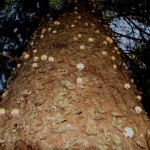Only healthy forests can provide many important services upon which we rely – air quality and water cycle regulation; biodiversity and soil protection; carbon sequestration and mitigation of climate change, and social and cultural value.
Forest health has long been threatened by insect pests and diseases accidentally moved to new areas. More recently, climate change has become one of the greatest threats to forest and tree health, says Elena Paoletti, senior scientist at the Institute for Plant Protection of the National Council of Research of Italy. She adds “Climate change and air pollution pose new threats to forests and change their ability to tolerate stressors.”
Historically, climatic extremes, air pollution, insects and disease have been the main factors adversely affecting forest health. Understanding how these stress agents are affected by, and respond to climatic change is fundamental to our efforts to mitigate the impacts of a changing environment. Adaptive forest strategies must be developed.
She notes that, among other issues, climate change is resulting in the expansion of distribution ranges of some insect pests and pathogens. These range shifts have the potential to be permanent and to have significant implications on the future health of the world’s forests.
Dr. Paoletti will coordinate a sub-plenary session at the 2010 IUFRO World Congress in Seoul. The aim will be to update forest scientists and managers regarding new breakthroughs in the field of forest tree health and especially to better understand the multi-faceted aspects of climate change.
Read this story in Spanish, French or German




Leave a Reply